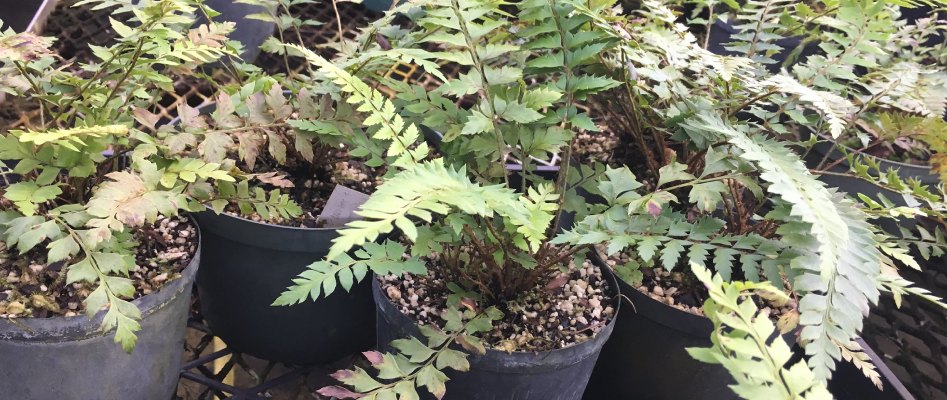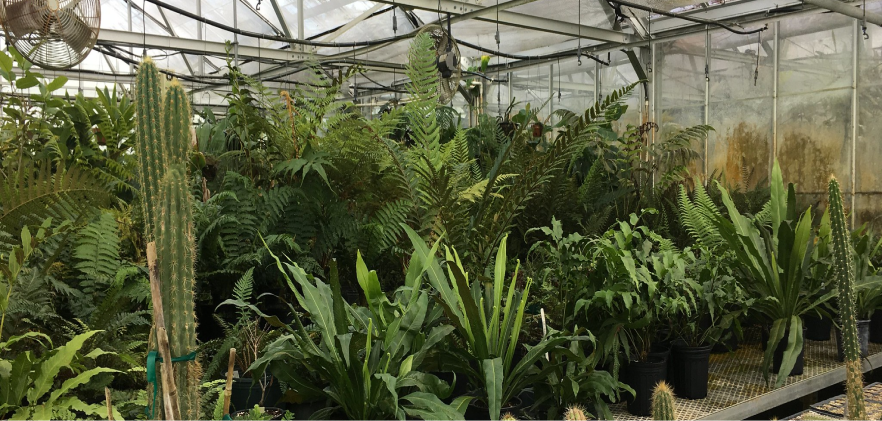CPC Best Plant Conservation Practices
to Support Species Survival in the Wild
to Support Species Survival in the Wild

US Endangered Polystichum calderonense is extremely rare in the wild. Luckily Fairchild Tropical Botanic Garden successfully propagated plants.
“By far, the chemical used most frequently in the nursery that causes the most damage is water. Too much water on plants encourages damping-off, root disease, fungus gnats, moss and liverwort growth, excessive leaching of mineral nutrients and potential groundwater contamination, and foliar diseases such as Botrytis blight….Too little water on plants may cause damage to root systems through salt damage or desiccation, allowing entry points for root disease pests. Plants under severe moisture stress have lower resistance to stresses associated with heat, cold, and wind.”
-Landis et al. 2009
Understand target species watering needs. Water judiciously and appropriately.
Rare plant species commonly grow in rare soils. Mimicking the soil texture and composition may be necessary to grow the rare species successfully.
Maintain genetic diversity of all forms rather than artificially selecting the most beautiful or the most fecund.
If the species is accessible to the public, safeguard it against theft.
If the species is cold sensitive, protect from freezing temperatures either by covering or moving indoors.
Understand the conditions within your nursery and match the target plant needs to the microsite conditions of light and water within the nursery.
If the conditions required of the target species are not available in the existing nursery, it is possible to create small areas to accommodate plant needs.
When moving plants from the nursery to outdoors, acclimatize gradually.
When you are in the fortunate situation that you have more plants than you need to maintain a conservation collection at your facility, share with other botanical gardens or use the material in a carefully planned reintroduction.
 Questions to Ask about Your Nursery Conditions
Questions to Ask about Your Nursery Conditions

Nursery spaces can provide controlled environments for endangered plants." Photo credit: Fairchild Tropical Botanic Garden
Prior to planting on the grounds, conduct research about the species’ natural history, cultivation and history in your garden’s collection.
Understand factors needed for proper maintenance of the species. Use the following resources:
Develop and maintain a Cultivation Management Plan.
 Questions to Ask About How to Select the Best Location for Planting a Rare Species in a Botanical Garden
Questions to Ask About How to Select the Best Location for Planting a Rare Species in a Botanical Garden
Determine what is required for the species to reproduce and what factors limit reproduction.
If the destination of the offspring is reintroduction to the wild, several actions are warranted:
Learn the invasive species in your area, watch for them in your garden plots, and remove them promptly once detected.
Be observant. Record observations systematically and on a routine schedule.